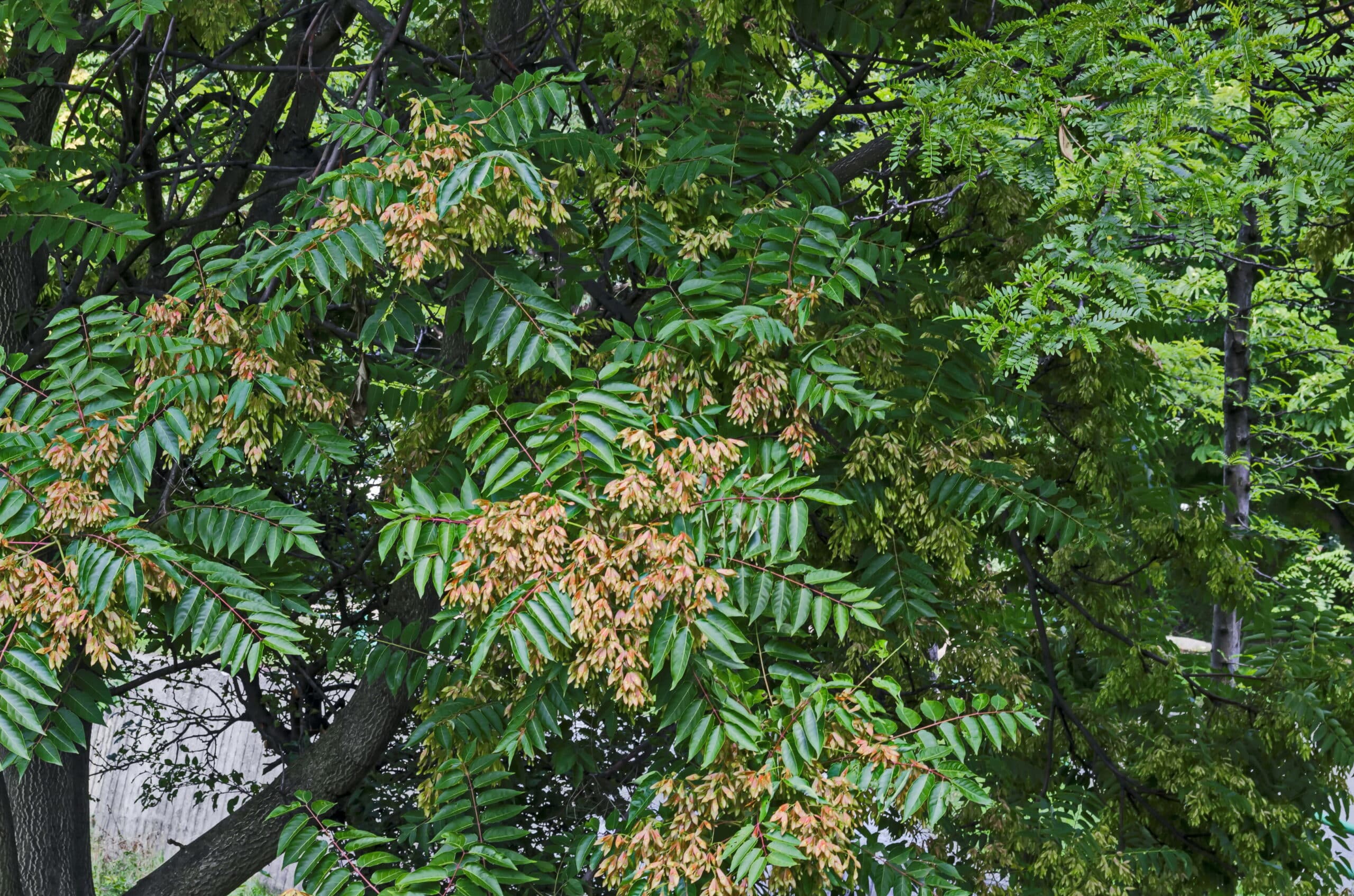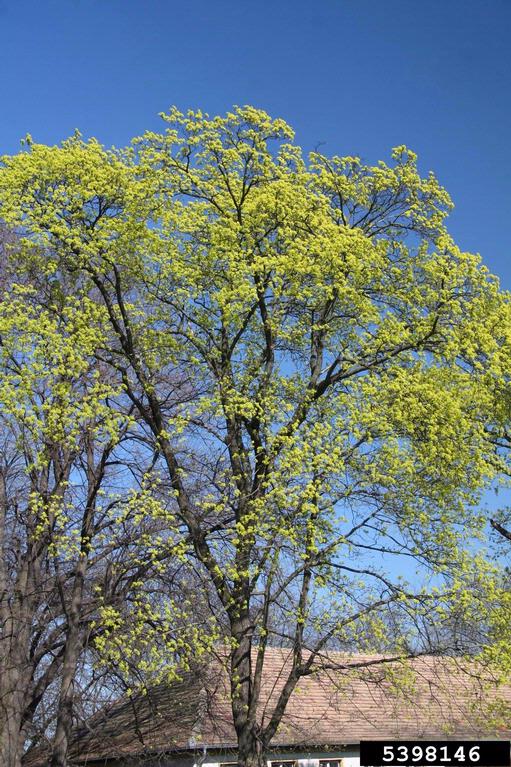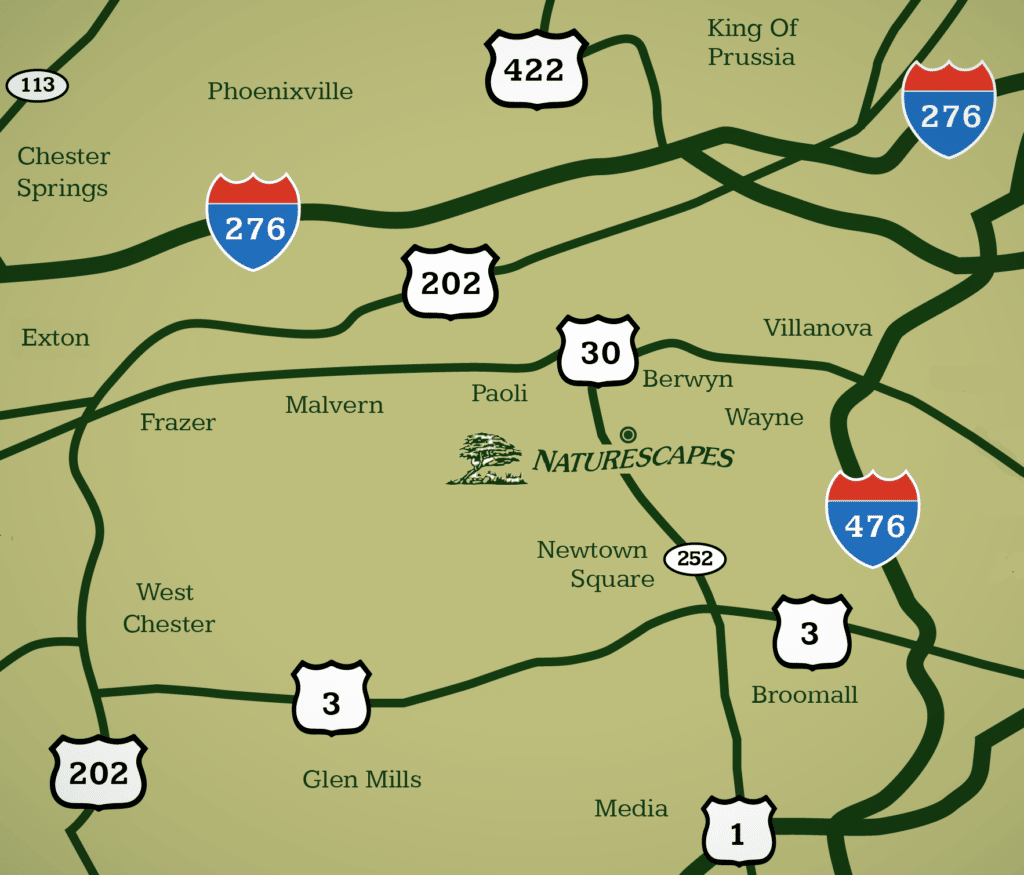When we look at the trees in our yard our around our community, we rarely consider whether or not they belong. The beauty they provide our landscape, how they clean the air, and their ability to prevent erosion are typically outweighed by any negatives. Unfortunately, not all trees have the same impact on the local soil or wildlife.
Certain trees are invasive, and some can provide a good environment for pests. Certain trees, like the Tree of Heaven and the Norway Maple, can do far more harm than good. If you have one of these trees on your property, you may want to contact a professional to have it properly removed.
Ailanthus Altissima (TREE OF HEAVEN)
 The so-called Tree of Heaven was introduced to the US from China in the late 1700s when there was great interest in all things Chinese. Gardeners soon realized that whereas it was very hardy (you practically can’t kill it) it was allelopathic (toxic) to many plants around it, thus ensuring its own survival. It grows like the weed it is, can grow almost anywhere, suckers freely, and colonizes large areas if left alone. Plus, it provides a source of food and shelter for the dreaded Spotted Lanternflies. And, yes, it’s quite malodorous (think of rancid peanuts and used gym socks), especially when cut.
The so-called Tree of Heaven was introduced to the US from China in the late 1700s when there was great interest in all things Chinese. Gardeners soon realized that whereas it was very hardy (you practically can’t kill it) it was allelopathic (toxic) to many plants around it, thus ensuring its own survival. It grows like the weed it is, can grow almost anywhere, suckers freely, and colonizes large areas if left alone. Plus, it provides a source of food and shelter for the dreaded Spotted Lanternflies. And, yes, it’s quite malodorous (think of rancid peanuts and used gym socks), especially when cut.
This pinnately compound-leafed tree has been declared a noxious weed in Australia, New Zealand, The US, and many countries in Europe. It has gotten the nicknames: Tree of Hell, Ghetto Palm, and Stink Tree.
Whereas it’s used for some silkworm industries and its wood Is used in cabinetry it has little or no value in ornamental horticulture especially in the smaller scale property. There are far more interesting, better-behaved, beneficial native trees than Ailanthus.
Acer Platenoides (NORWAY MAPLE)

Robert Vidéki, Doronicum Kft., Bugwood.org
This tree was introduced to the US in the mid-1700s as a shade tree. Over time gardeners realized that its dense shade and very superficial rooting habit made understory growth very difficult, even weeds have a tough time.
It has become a very invasive tree as the milder climate here does not kill off young plants as in its native area.
And it seeds quite freely. As it overcompletes with more desirable native trees it has been banned for sale in some states. Its fall color is quite lackluster, often turning just a dull yellow, then brown.
Whereas it is a tough tree for urban ‘hot spots’ its invasiveness makes it non-desirable for suburban property, especially smaller sites. Consider any of the more desirable Red Maple or Sugar Maple varieties or another more native selection altogether.
Take Action Against Invasive Tree Species
Taking care of the trees on your property is crucial for maintaining a healthy environment and landscape. If you suspect that you have invasive species like the Tree of Heaven or Norway Maple, it’s essential to take action. These trees can negatively impact local soil and wildlife, creating long-term problems. Don’t wait for these issues to escalate!
